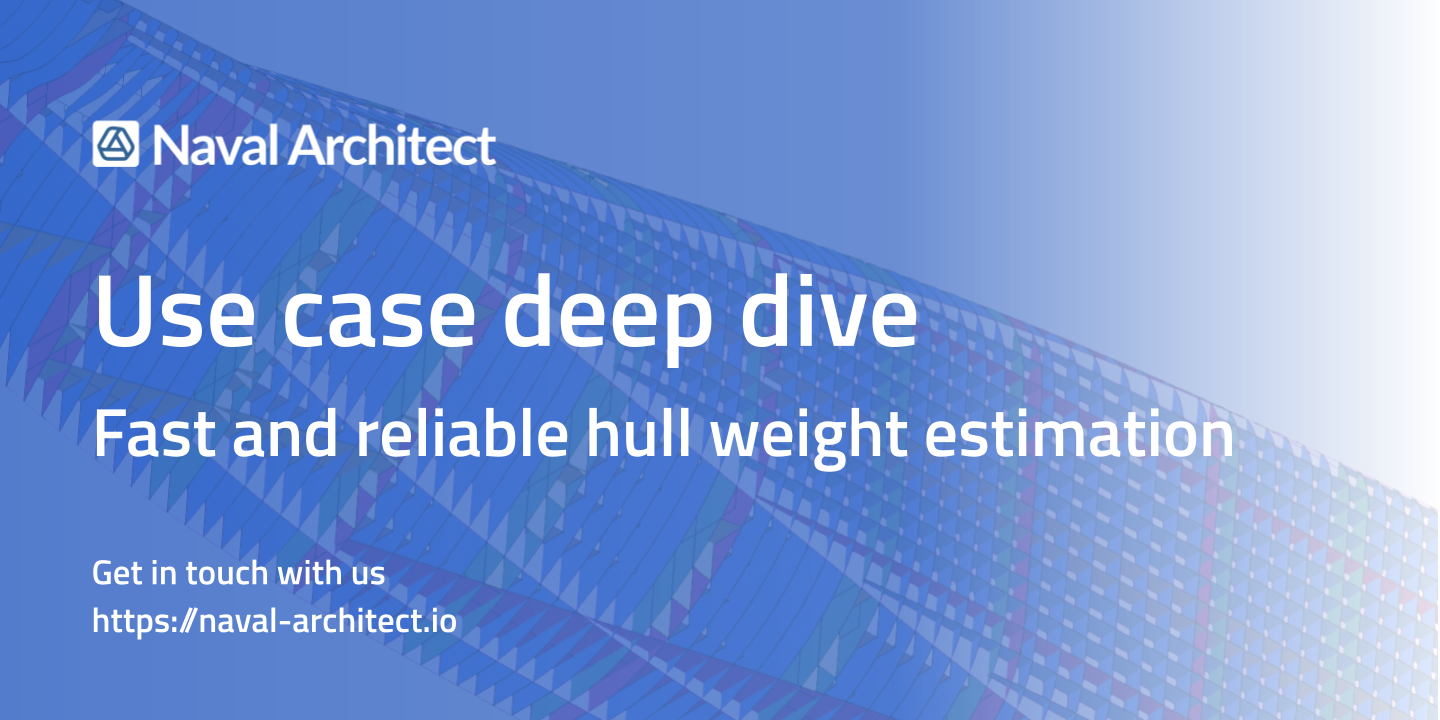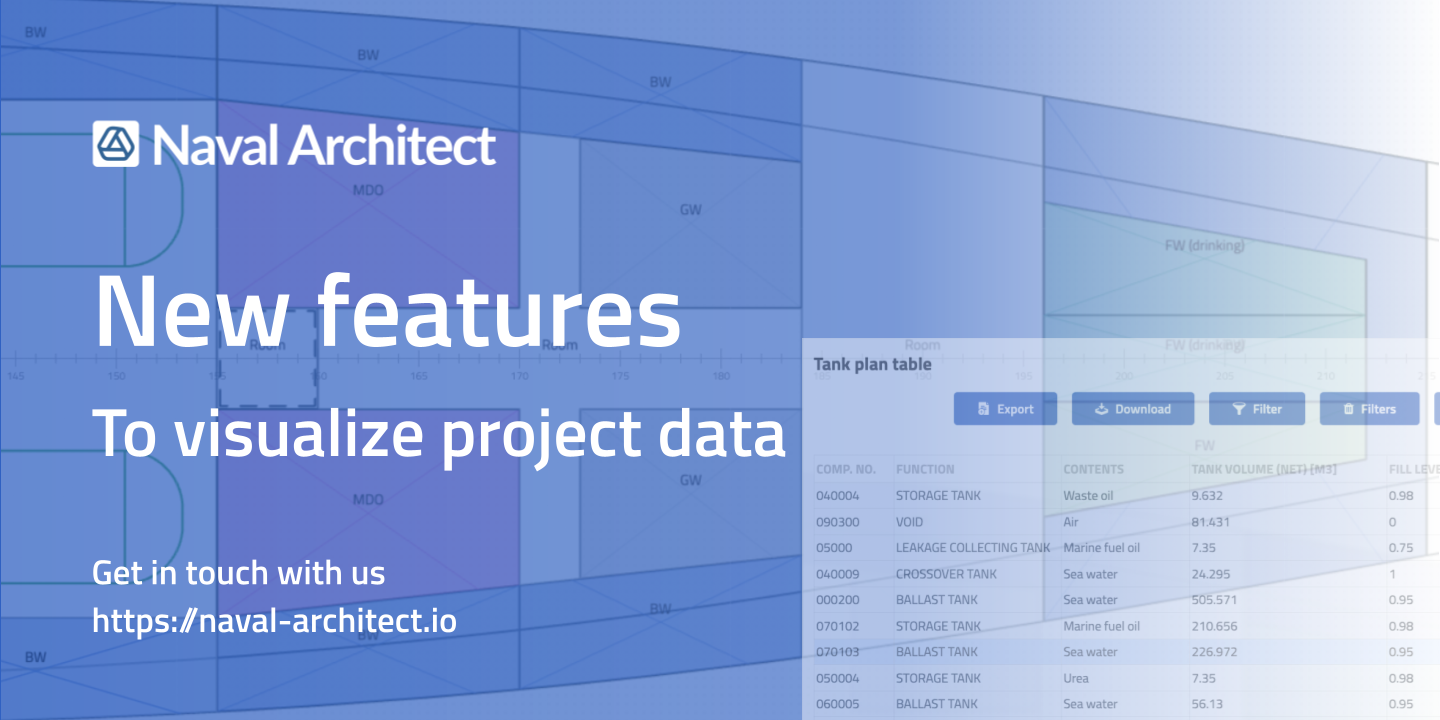Heating, Ventilation, and Air Conditioning (HVAC) are one of the most complex and widespread, yet…
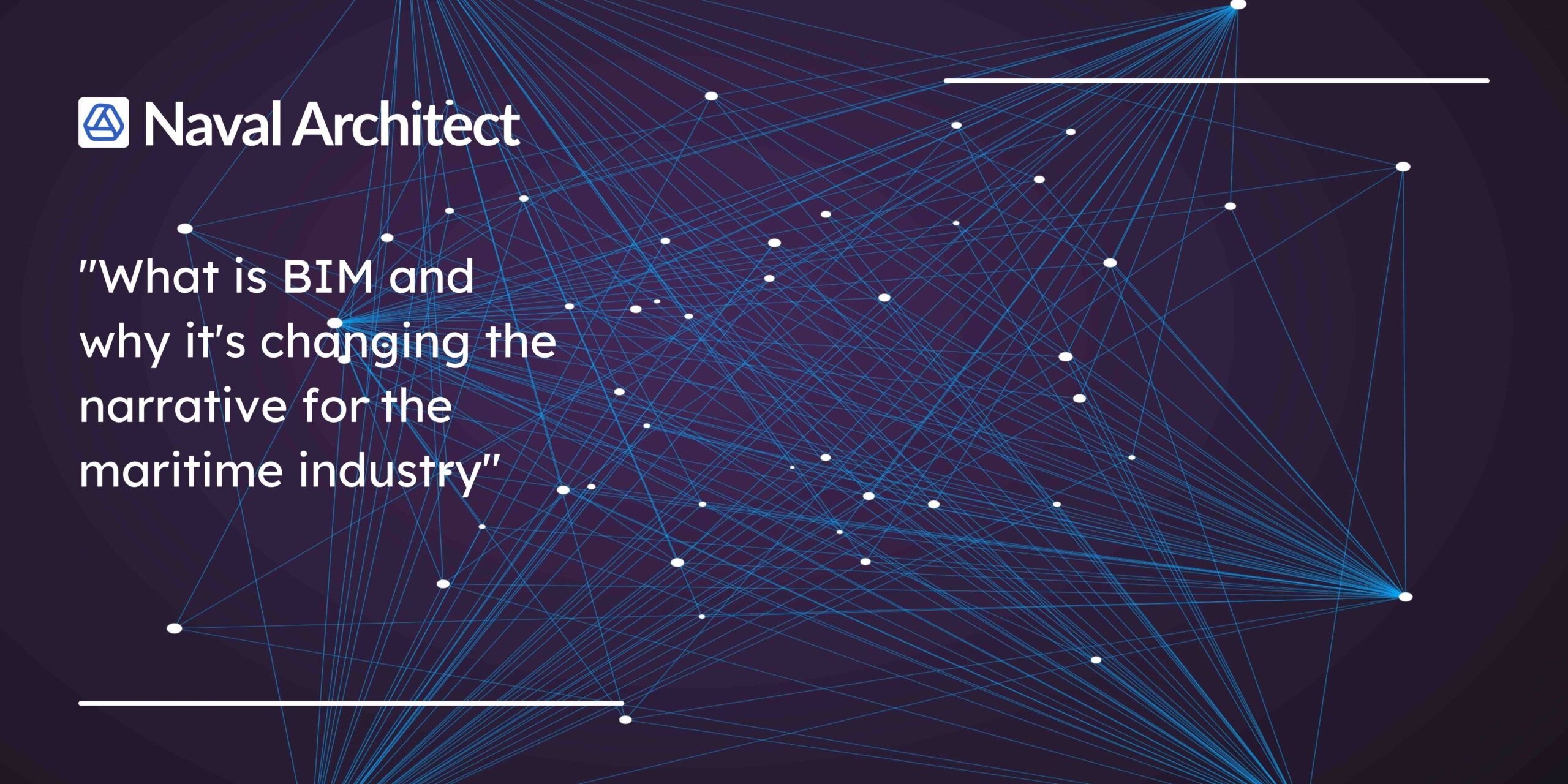
What is BIM and why it’s changing the narrative for the maritime industry
In recent years, Building Information Modeling (BIM) has become increasingly popular in the construction industry. It is revolutionizing the way that buildings are designed and constructed, but what does it mean for the maritime industry? Is it applicable and useful? In this blog post, we will discuss what BIM is, the benefits of BIM, and what it means for the future of the maritime industry.
What is BIM?
The origin of the term “Building Information Modeling” (BIM) is not well-documented. The term has been in use since at least the early 2000s, when it began to be used to describe the use of digital technology in the design and construction of buildings. The meaning of the term has since evolved to encompass the entire lifecycle of a building, including design, construction, operation, and maintenance.
Building Information Modeling (BIM) is a digital representation of a building or facility that allows architects, engineers, and construction professionals to collaborate and coordinate their work in a virtual environment. BIM provides a centralized location for storing and sharing information about a building’s design, construction, and maintenance, including data on materials, equipment, and systems. This enables professionals to make more informed decisions, reduce errors, and improve communication throughout the construction process.
Benefits of BIM
BIM was initially developed as a design paradigm, but it offers much more than just the obvious design benefits. BIM has numerous advantages that extend beyond just the design phase, making it an overarching project management technology that plans, designs, builds, and operates, while keeping track of everything. In fact, the benefits are so concrete that in many countries BIM is becoming mandatory for new public-funded building construction and infrastructure projects.
Benefits
BIM has several benefits for the construction industry, including improved collaboration, reduced errors and rework, and improved project visualization. The following points demonstrates why many organizations worldwide are pursuing an increased adoption of BIM in their processes:
- Seamless collaboration and coordination among project stakeholders
- Improved communication and information sharing throughout the design and construction process
- Reduced human errors and double work
- Shorter project lifecycles due to less re-work and better planning
- Greater accuracy and consistency in information
- Better visualization and analysis of a building’s design and performance
- Improved facility management and maintenance (e.g. testing different floor layouts)
- Greater sustainability and energy efficiency in building design and operation
- Accurate cost and schedule estimates due to better planning and data
- Identifying potential issues before they become problems
Implications
According to a study, nearly 9 in 10 large-scale construction projects are not delivered on time. About a quarter of projects are delivered more than 250 days (!) late. Looking at the budget side, about 85% (!) of all construction projects completed in twenty countries over the course of a 70 year period experienced cost overrun according to another study. In short, construction project cost overrun and delays are a huge industry problem that’s costing billions of dollar each year. The company that can keep a project running on budget and time will have a significant advantage over the competition. This is precisely where BIM can help.
BIM For the maritime industry
BIM has revolutionized the way buildings and structures are designed, constructed, and maintained. Despite many similarities in the design and construction process of buildings and ships, the maritime industry is, however, an exception when it comes to the usage of BIM. BIM has yet to become a known concept for designing and managing ships and offshore structures – even though it can have a variety of benefits for the shipbuilding industry as well.
Improved collaboration
One of the main benefits of BIM for the maritime industry is its ability to improve collaboration and communication among all parties involved in a project. BIM allows for real-time coordination and eliminates the need for manual coordination, which can save time and reduce errors. This is especially important in the maritime industry, where the design and construction of ships and offshore structures can be complex and require input from multiple parties.
Change Management
Engineering change management is a process that helps organizations to efficiently manage changes to their engineering designs and related documentation. BIM helps project teams to keep track of all changes and acts as a Single Source of Truth. This way, your team always knows what the current status is and where to find it. It reduces the risk of human errors significantly in the process.
Reduced Errors and double work
BIM allows for the identification of potential problems before construction begins, which reduces errors and rework during the construction phase. This helps to save time and money, and ensures that the project is delivered on time and within budget.
Cost and Schedule Management
BIM can also be used to improve cost and schedule management. It allows for accurate cost and schedule estimates, and can help identify potential issues before they become problems. BIM can also be used to simulate and analyze different design options, helping to identify the most cost-effective and efficient solution.
Better decision making
By having a central platform with all project related information, organizations can make more informed decisions. This helps to ensure that changes are aligned with the organization’s goals and objectives and are prioritized appropriately.
Improved Safety
Another benefit of BIM for the maritime industry is its ability to improve safety. BIM can be used to simulate the performance of ships and offshore structures in different conditions, helping to identify potential issues and improve safety. BIM can also be used to plan for maintenance and upgrades, which can help to ensure that ships and offshore structures are operating at optimal levels.
Conclusion
BIM is a powerful tool that can be used to improve collaboration, coordination, cost management, and safety in the maritime industry. BIM can be used to design and plan ships and offshore structures, manage the construction, maintenance, and operation of these structures, and simulate their performance in different conditions. As the industry continues to evolve, BIM will play an increasingly important role in the maritime industry.
The basic requirement for BIM adoption in the maritime industry is awareness of the concept and its benefits as well as a generally more open mindset towards innovation and acceptance for change.
Naval Architect’s role in the adoption of BIM
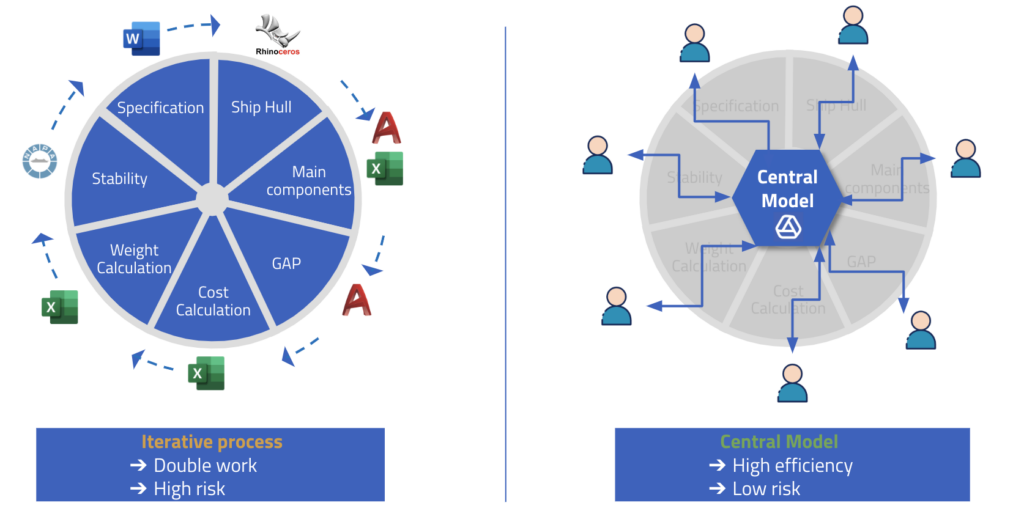
Naval Architect is a software platform that is exactly made for the adoption of Building Information Modeling (BIM) in the maritime industry. Our software is used by shipyards, design offices and suppliers, allowing the users to create and manage digital representations of ships and other marine structures:
- Naval Architect is the industry’s first Ship Data & Design Management Platform to automate design, engineering, and production processes based on a digital ship model. We enable project teams to collaborate in a shared and cloud-based environment, maximizing your business efficiency and reliability and making sure that your projects are consistently delivered on time and budget.
- We provide a central platform for creating and managing project data based on a digital ship model on which project teams collaborate on in the cloud. This central model is the “Single Source of Truth” and contains all information about the ship: e.g. General Arrangement Plan, 3D CAD model, planning status, weight calculation, specifications, component data, project history and any other information you define. It is continuously maintained throughout the ship’s life and is the essential source of information.
Naval Architect is a process automation software for design, engineering, and production, making shipbuilding projects more efficient and reliable.
In fact, Naval Architect’s underlying concept is called
Ship Information Modeling (SIM)
The SIM – a database that contains all the information about a ship – is continuously maintained throughout the ship’s life and is the essential source of information. By streamlining the design process and by offering a digital and collaborative approach, the shipbuilding platform helps to ensure that projects are completed on time and on budget.
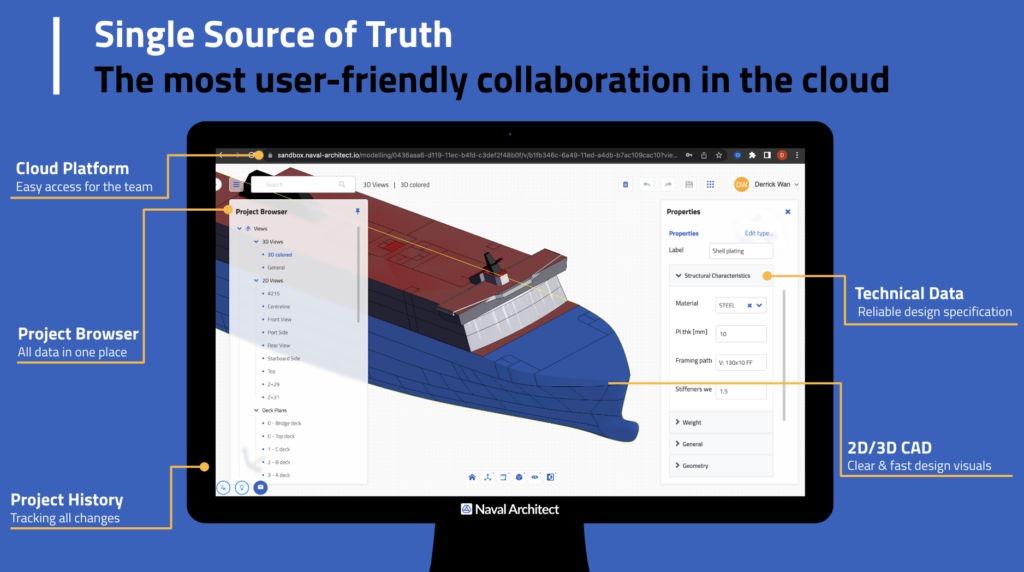
Are you ready to unlock the benefits of bim in your projects?
Let us discuss your challenges in a 30-minute call. Together we will identify opportunities and find out how your processes can be made more efficient and reliable by using our technology. ➡︎ Schedule a discovery call here


